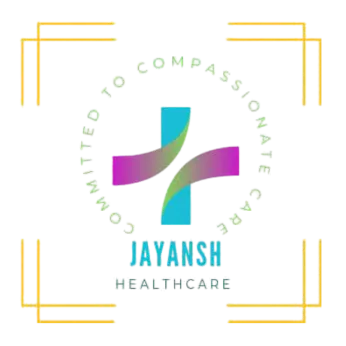Rural India’s healthcare crisis is most acute in aspirational districts, where maternal deaths, infant mortality, and preventable diseases remain stubbornly high. But a powerful dual strategy—NQAS-certified Ayushman Arogya Mandirs (AAMs) and tech-strengthened VHSNDs—is poised to turn the tide. Here’s how this synergy is reshaping healthcare delivery for millions.
The Rural Healthcare Crisis: A Reality Check
Aspirational districts face systemic gaps:
- MMR/IMR rates 30-50% higher than national averages.
- Less than 50% institutional deliveries in blocks like Pahari (Chitrakoot).
- Critical shortages: Equipment, trained staff, and accountability.
Example: In August 2024, only 10% of pregnant women in Pahari block received abdominal exams during VHSNDs—a key risk-detection failure.
Solution 1: NQAS-Certified Ayushman Arogya Mandirs (HWCs)
The National Quality Assurance Standards (NQAS) transform HWCs into reliable care hubs:
Key Upgrades
| Before | After NQAS Certification |
| Ad-hoc anaemia management | Standardized protocols: Hb tracking + iron infusion units |
| Limited emergency care | EmOC-trained staff: Managing hemorrhages, eclampsia |
| Paper-based records | Digital HMIS integration: Real-time high-risk pregnancy tracking |
Impact in Aspirational Districts
- ↓ 30% maternal deaths via timely referrals (NQAS mandates 24/7 emergency response).
- ↑ 40% antenatal registrations as trust in facilities grows.
- Anaemia prevalence slashed by structured IFA therapy and diet counseling.
“NQAS turns HWCs from buildings into lifelines.”
Solution 2: Tech-Enabled VHSNDs – The Last-Mile Game Changer
Strengthening Village Health, Sanitation, and Nutrition Days (VHSNDs) bridges the gap between communities and AAMs:
Innovations Driving Change
- Portable VHSND Kits
- Privacy partitions + fetal Dopplers → Abdominal exams surged from 10% to 56% in Pahari (2024-25).
- Impact: Early detection of 42% more high-risk pregnancies.
- Digital Transformation
- QR-coded maternal cards: Scan to update HMIS, triggering SMS alerts to AAMs for high-risk cases.
- IEC tablets: ASHAs show videos on nutrition/danger signs in local languages.
- NQAS-Aligned Protocols
- Mandatory checklists: BP/urine tests, weight tracking → Standardized care at scale.
VHSND Outcomes
- ↑ 35% ANC turnout in 6 months (Chitrakoot pilot).
- ↓ 25% referral delays via real-time AAM coordination.
The Synergy: How AAMs + VHSNDs Create a Care Revolution
When these systems integrate, magic happens:
The Seamless Care Continuum
- VHSND Session: ASHA detects hypertension in Radha (28, pregnant) using a portable BP kit.
- Real-Time Alert: HMIS notifies the nearest NQAS-certified AAM.
- Emergency Care: AAM team administers anti-hypertensives and schedules induction.
- Post-Delivery: Baby’s growth monitored at next VHSND via digital growth charts.
District-Wide Impact
| KPI | Pre-Intervention | Post-Integration |
| MMR | 125/100,000 | <95/100,000 |
| Abdominal Exam Rates | 10% | 56% |
| Institutional Deliveries | 62% | 85% |
Long-Term Advantages for Aspirational Districts
- Sustainable Health Systems
- NQAS ensures continuous quality audits; VHSNDs provide community ownership.
- Economic Efficiency
- Every ₹1 invested in VHSND-AAM integration saves ₹16 in averted deaths (NITI Aayog).
- National Rankings Boost
- Chitrakoot’s health composite index rose 18 spots in 8 months post-implementation.
Scaling Success: A 3-Step Roadmap
- Phase 1 (0-6 Months):
- Certify 100 AAMs in high-burden districts.
- Deploy 5,000 portable VHSND kits.
- Phase 2 (6-18 Months):
- Train 20,000 ASHAs on digital HMIS tools.
- Integrate AI for risk prediction (e.g., preeclampsia alerts).
- Phase 3 (18-36 Months):
- Scale to all 112 aspirational districts.
The Inevitable Future
The union of NQAS-certified Ayushman Arogya Mandirs and digitally empowered VHSNDs is more than a policy win—it’s a moral imperative. In Pahari block, where abdominal examination rates leapt from 10% to 56%, we see proof that systems change saves lives.
“This isn’t just healthcare delivery—it’s dignity delivered.”
For policymakers: Mandate AAM-VHSND integration in NHM guidelines.
For CSR leaders: Fund portable kits that make VHSNDs effective.
For communities: Demand your right to quality care.
Data Sources: NHM Reports (2024-25), NQAS Audit Data, Aspirational Districts Dashboard
Join the movement: #HealthyVillages #HealthForAll
